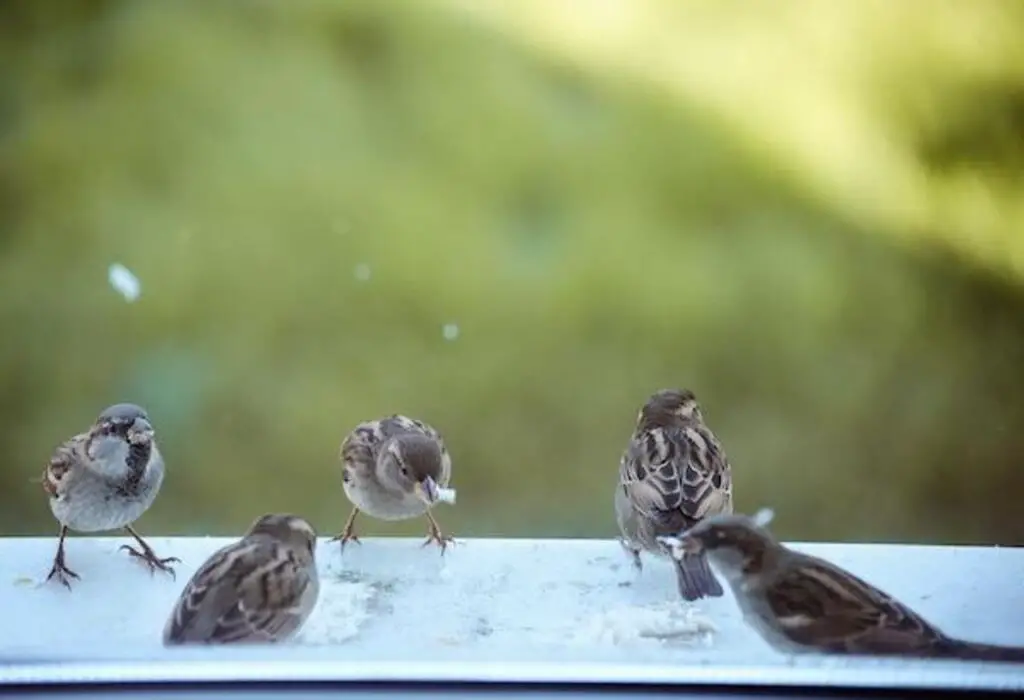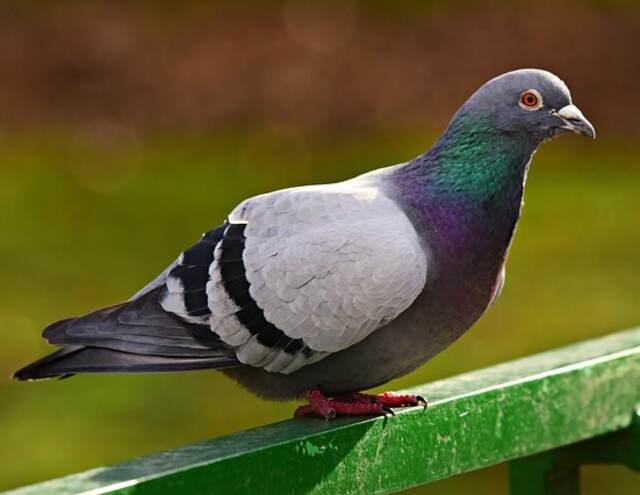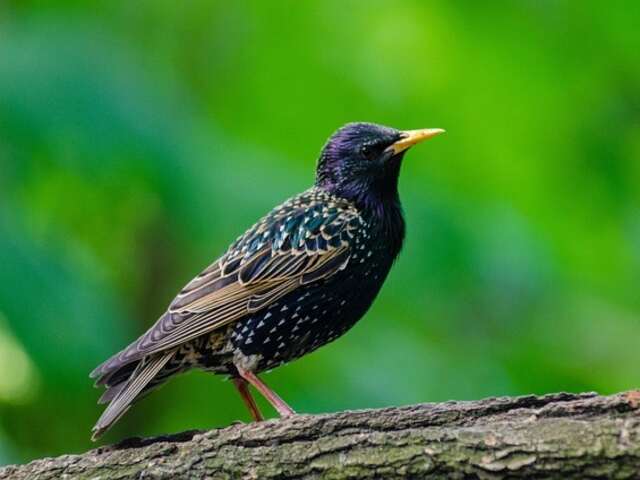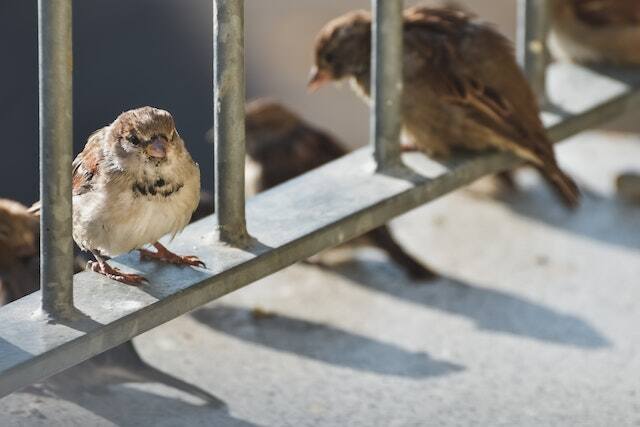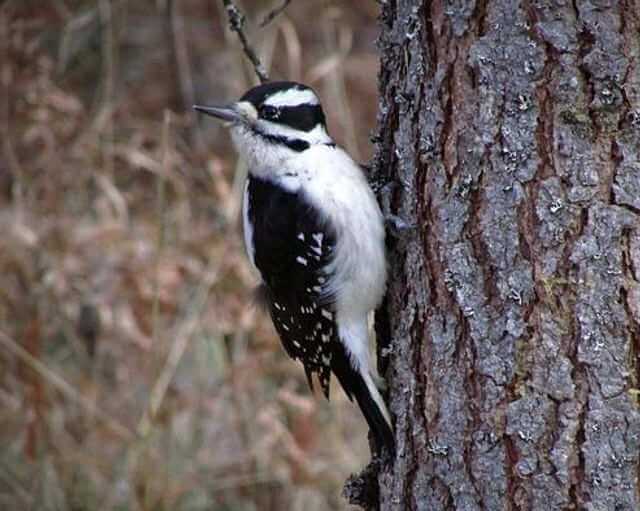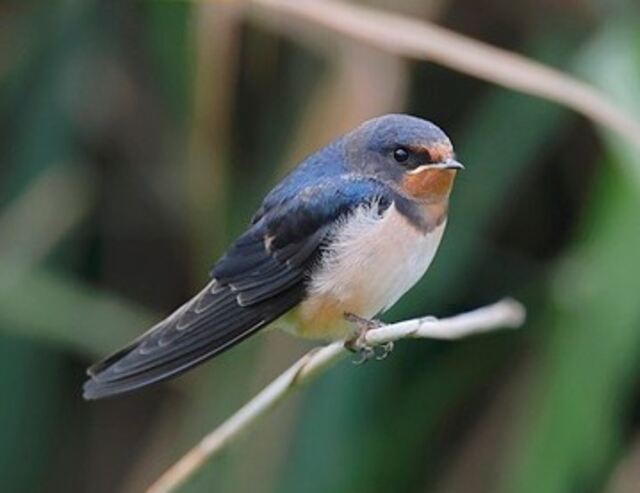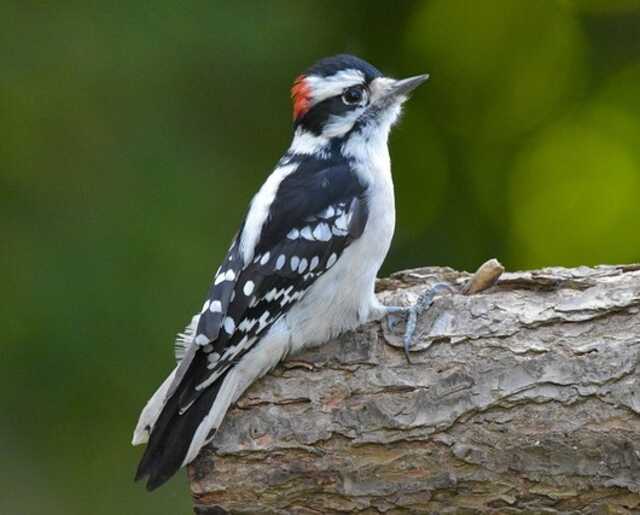The sound of birds chirping can be a pleasant addition to any outdoor environment. However, when these feathered creatures make their way into your soffit, they can cause significant damage to your property and pose health risks to you and your family.
The soffit is the underside of the roof overhang, and it provides an ideal nesting spot for birds. If you’re hearing rustling, scratching, or chirping sounds coming from your soffit, it’s likely that you have a bird infestation.
Getting birds out of your soffit can be a challenging task, but it’s essential to do so to prevent further damage and health risks.
In this article, we’ll provide you with step-by-step instructions on how to get birds out of soffit safely and effectively and prevent future infestations.
We’ll cover everything from assessing the situation and identifying the type of bird to using ladders, protective gear, and necessary tools.
By following our guide, you’ll be able to get rid of birds in your soffit and ensure that your property remains safe and healthy.
Table of Contents
- 1 Assess Situation
- 2 Identify Bird Type
- 3 Select Tools and Equipment
- 4 Prepare for Removal
- 5 Remove Birds
- 6 Seal and Prevent Infestations
- 7 Clean Up After Removal
- 8 Check for Baby Birds
- 9 Understand Bird Behaviors
- 10 Differentiate Nuisance vs Protected Birds
- 11 Use Ladders and Protective Gear
- 12 Handle Birds and Droppings Safely
- 13 Get Professional Help
- 14 Lure Birds with Food or Sound
- 15 Trap Birds for Safe Removal
- 16 Seal Entry Points and Nesting Sites
- 17 Install Deterrents
- 18 Disinfect and Sanitize Area
- 19 Discard Infested Materials Properly
- 20 Frequently Asked Questions
- 20.1 What are some common bird species that may be found in soffits?
- 20.2 How long does it typically take to remove birds from a soffit?
- 20.3 Are there any legal restrictions on removing certain types of birds from soffits?
- 20.4 What are some natural deterrents that can be used to prevent birds from nesting in soffits?
- 20.5 How often should soffits be inspected to prevent bird infestations?
- 21 Conclusion
- 22 Author
Assess Situation
The initial step in addressing the issue of avian infestation in residential or commercial structures involves a thorough assessment of the situation.
This includes identifying the location and extent of the infestation, evaluating the potential risks and damages caused by the birds, and determining the appropriate course of action for safe and effective removal.
Assessing accessibility to the soffit area is crucial to determine the tools and equipment needed for the removal process.
Determining bird activity and behavior is also essential to understand the best approach for removing the birds.
Additionally, evaluating nesting conditions and the presence of baby birds is crucial to avoid harming or separating them from their parents.
Once these factors have been assessed, the next step is to identify the type of bird causing the infestation.
| Situation | Action Required |
|---|---|
| Bird infestation detected? | Yes/No |
| Extent of infestation | Low/Moderate/High |
| Location of birds | Indoors/Outdoors |
| Potential risks | Health/Safety/Property |
| Necessary permits | Yes/No |
Identify Bird Type
Recognizing the avian species residing within the soffit is crucial in determining the appropriate removal techniques and precautions necessary to ensure the safe and humane extraction of the feathered intruders.
Identifying bird species can be achieved through bird watching tips such as observing their size, color, beak shape, and vocalizations.
It is also important to differentiate between nuisance and protected birds, as the latter requires special permits and protocols for removal.
Additionally, bird conservation efforts should be taken into consideration, as some bird species are endangered or threatened.
Once the bird species has been identified, the appropriate tools and equipment can be selected to safely and effectively remove the birds from the soffit.
| Bird Type | Description |
|---|---|
| House Sparrows | Small, brown birds with thick beaks |
| Starlings | Medium-sized birds with dark feathers |
| Pigeons | Large birds with plump bodies and cooing sound |
| Swallows | Sleek, agile birds with pointed wings |
| Woodpeckers | Medium-sized birds with strong beaks |
| Chimney Swifts | Small, dark birds with crescent-shaped wings |
| Barn Owls | Medium-sized owls with heart-shaped faces |
| Nuisance Birds | Local bird species causing disturbances |
Note: Identifying the specific bird species is crucial for implementing effective removal methods. Consider consulting a bird expert or wildlife control professional for accurate identification and appropriate strategies to safely remove birds from soffits.
Select Tools and Equipment
Choosing suitable tools and equipment is a crucial step in ensuring the safe and humane removal of avian intruders from the soffit.
It is important to choose the right tools and equipment for bird removal, such as bird nets, bird traps, and bird repellents. Proper maintenance of tools and equipment is also important to ensure their effectiveness and longevity.
Budget-friendly tools for bird removal can include simple items such as flashlights, gloves, and safety glasses.
It is also essential to have a ladder to access the soffit and protective gear such as face masks and gloves to protect yourself from bird droppings and other potential hazards.
In addition, it is recommended to have a partner with you to assist in the removal process. Choosing the appropriate tools and equipment is just one aspect of preparing for the removal of birds from the soffit.
| Tools and Equipment | Purpose |
|---|---|
| Protective gear | Safety for handlers |
| Nets | Capture and release birds |
| Traps | Safely trap birds for removal |
| Ladders | Access high areas |
| Disinfectants | Clean and sanitize areas |
Prepare for Removal
Preparing for the safe and effective removal of avian intruders from the soffit involves a variety of steps, such as assessing the situation, selecting appropriate tools and equipment, and taking safety precautions to protect oneself from potential hazards.
Practice patience and use caution when handling birds, as they can become agitated and potentially harm themselves or others.
It is important to stay informed about the behavior and habits of the specific type of bird present, as this can aid in the removal process.
Additionally, wearing protective gear, such as gloves and goggles, can prevent exposure to bird droppings and other potential health hazards.
Proper preparation also includes checking for the presence of baby birds and avoiding removal during nesting season to prevent harm to the offspring.
Once all necessary precautions have been taken, the removal process can begin.
| Preparation Steps | Description |
|---|---|
| Clear area of obstacles | Remove potential hazards |
| Set up equipment | Place nets, traps, or ladders |
| Coordinate with team | Assign roles and responsibilities |
| Ensure safety measures | Use protective gear and follow protocols |
Remove Birds
The removal process involves safely and effectively extracting avian intruders from their nesting sites within the soffit, using a variety of techniques such as luring birds out with food or sound, trapping them for safe removal, sealing off entry points, and installing deterrents to prevent future infestations.
Bird removal techniques should always prioritize humane bird control, meaning the extraction process should not harm the birds or their offspring. This requires a certain level of knowledge and experience in understanding bird behavior and habits, as well as the use of appropriate tools and protective gear.
Disinfecting and sanitizing the infested area is also crucial to prevent the spread of bird-borne illnesses and parasites. As bird infestations can cause damage to the property and pose health risks to occupants, preventing bird infestations is just as important as removing them.
Sealing off entry points and nesting sites, and installing deterrents such as bird spikes, netting, or sound devices can discourage birds from returning.
| Removal Methods | Description |
|---|---|
| Capture and release | Safely catch and relocate birds |
| Use deterrents | Encourage birds to leave on their own |
| Seek professional help | Call wildlife control or pest management |
Seal and Prevent Infestations
To prevent future bird infestations in the soffit, it is essential to implement preventive measures.
Understanding the nesting habits and behavior changes of birds can aid in identifying potential entry points and nesting sites.
Sealing off these areas can prevent birds from entering and establishing nests.
Installing deterrents, such as spikes or netting, can also discourage birds from perching or roosting in the area.
Disinfecting and sanitizing the infested area can eliminate any remaining bird droppings, which can attract other birds.
By taking these necessary precautions, future bird infestations can be avoided, and the soffit can be kept clean and bird-free.
The next step after preventing future infestations is to clean up after the removal process.
| Steps to Seal and Prevent Infestations | Description |
|---|---|
| Identify entry points | Determine where birds are entering |
| Seal gaps and cracks | Close off access points to prevent re-entry |
| Install bird deterrents | Use visual or physical deterrents to discourage nesting |
Clean Up After Removal
Cleaning up after the removal process is a crucial step in maintaining a bird-free soffit, as it involves post-removal sanitation, dealing with bird droppings, and disinfecting infested areas.
The bird droppings and materials left behind can attract other birds, leading to further infestations.
It is essential to remove and dispose of all droppings, feathers, and nesting materials thoroughly.
The area should then be disinfected with a solution of water and bleach or other suitable disinfectants to kill any remaining bacteria or parasites.
Protective gear such as gloves and masks should be worn during this process to avoid exposure to harmful pathogens.
Once the area is clean and disinfected, it is essential to check for the presence of baby birds before sealing off the entry points and nesting sites.
| Cleaning Steps | Description |
|---|---|
| Remove nests and droppings | Safely dispose of nesting materials and droppings |
| Disinfect the area | Use appropriate disinfectants to sanitize the space |
| Dispose of waste | Follow proper disposal guidelines for infested materials |
Check for Baby Birds
It is important to check for the presence of any baby birds before sealing off entry points and nesting sites in order to ensure their safe removal and prevent further infestations.
Baby birds are vulnerable and may not be able to fly or survive on their own, so it is crucial to handle their removal with care.
When checking for baby birds, keep in mind that different bird species have different nesting habits and may lay eggs at different times of the year.
Look for signs of nesting activity, such as twigs, grass, and feathers, in the soffit area and listen for any chirping or peeping sounds that may indicate the presence of young birds.
If you do find baby birds, it is important to protect them by removing them gently and placing them in a safe, warm location until they are ready to fly.
Remember to wear protective gear and wash your hands thoroughly after handling birds and their droppings.
Understanding bird behaviors and habits can help you identify and protect young birds during the removal process.
| Steps to Check for Baby Birds | Description |
|---|---|
| Visual inspection | Look for signs of baby birds or nesting activity |
| Listen for chirping sounds | Baby birds may make audible sounds in the nest |
| Observe parental behavior | Parent birds may be seen feeding or tending to nest |
Understand Bird Behaviors
Understanding bird behaviors is crucial in identifying and protecting young birds during the removal process, as different bird species have different nesting habits and may lay eggs at different times of the year.
It is important to know the communication patterns of birds to understand when they may be threatened or agitated.
Additionally, bird migration can also affect the timing of their nesting and breeding patterns.
Some birds may also have specific nesting behaviors, such as building nests in small crevices or hidden areas like soffits.
It is important to differentiate between nuisance and protected birds during the removal process to ensure compliance with wildlife protection laws.
Knowing how to identify and handle different bird species is essential to ensuring a safe and humane removal process.
| Bird Behaviors | Description |
|---|---|
| Nesting habits | Where birds choose to build their nests |
| Feeding patterns | How birds find and consume food |
| Social interactions | Interactions between birds within their species |
| Migration patterns | Seasonal movement of birds between locations |
Differentiate Nuisance vs Protected Birds
Differentiating between nuisance and protected birds is an important aspect of bird removal, as it ensures compliance with wildlife protection laws. Identifying protected species can be a challenge, as they may resemble common nuisance birds, such as pigeons or starlings.
It is crucial to research and consult with local wildlife authorities to determine which birds are protected and what legal implications may arise from their removal.
Ethical considerations in bird control should also be taken into account, as protected birds may contribute to local ecosystems and may require alternative solutions, such as relocation or habitat modification.
Understanding the difference between nuisance and protected birds can help prevent legal and ethical issues and ensure a safe and humane removal process.
Transitioning into the subsequent section about using ladders and protective gear, it is important to prioritize safety measures when working with any type of bird infestation.
| Characteristics | Nuisance Birds | Protected Birds |
|---|---|---|
| Examples | Pigeons, sparrows | Bald eagles, falcons |
| Legal considerations | No legal protection | Protected by regulations |
| Control options | Various methods | Limited or regulated control options |
Use Ladders and Protective Gear
The safe removal of birds from their nesting sites requires the use of appropriate equipment, including ladders and protective gear, to minimize the risk of injury or exposure to bird droppings and other hazards.
When using ladders, it is important to take safety precautions such as using harnesses, proper footwear, and eye protection to prevent falls and injuries.
Choosing the right ladder for the job is also crucial to ensure stability and support.
Additionally, protective gear such as gloves and masks should be worn when handling bird droppings to avoid potential health risks.
Ladder safety tips should be followed, including ensuring the ladder is on a stable surface, maintaining three points of contact at all times, and not overreaching.
Proper use of ladders and protective gear can ensure a safe and successful removal process.
| Safety Measures | Description |
|---|---|
| Secure ladder | Ensure stability and proper placement |
| Wear safety gear | Helmets, gloves, goggles, and protective clothing |
| Follow ladder safety protocols | Use proper climbing techniques and precautions |
Handle Birds and Droppings Safely
Handling birds and their droppings safely is essential for minimizing health risks and ensuring a successful removal process.
It is important to understand the risks of handling bird droppings without precautions, as they can carry harmful diseases and bacteria.
To protect yourself, it is crucial to wear protective gear such as gloves, masks, and goggles. In addition, ladder safety tips should be followed to prevent falls and injuries.
Once the birds have been removed, it is important to disinfect and sanitize the infested area to prevent the spread of disease.
There are several ways to disinfect bird droppings, including using a bleach solution or specialized disinfectant.
It is important to properly dispose of any contaminated materials. By taking these precautions, you can ensure a safe and successful removal process.
| Safety Procedures | Description |
|---|---|
| Use gloves | Protect hands from direct contact with birds or droppings |
| Avoid inhalation | Wear a mask or respirator to prevent the inhalation of pathogens |
| Proper disposal | Follow guidelines for the safe disposal of bird droppings |
Get Professional Help
Get professional advice on how to handle birds and droppings safely.
While DIY bird removal can be done, it is important to recognize the limitations of one’s own expertise and equipment.
If the situation is too complex or dangerous, it is recommended to seek the help of a professional bird removal service.
Finding reliable bird removal services can be challenging, but it is important to do research and read reviews to ensure the company is reputable and experienced.
Professional bird removal services can also provide additional services such as sealing off entry points and installing deterrents to prevent future infestations.
If you choose to go with a professional service, make sure to communicate your concerns and expectations clearly.
With the help of professionals, you can safely and effectively remove birds from your soffit and prevent future infestations.
| Situations Requiring Professional Help | Description |
|---|---|
| Large infestations | When the bird infestation is extensive |
| Protected bird species | When dealing with protected or endangered species |
| Safety concerns | If the situation poses significant risks |
Lure Birds with Food or Sound
Luring birds with food or sound can be an effective method for removing them from their nesting sites in a safe and humane manner, while also reducing the risk of damage to the surrounding area.
The use of decoys or bird calls can attract birds to a specific location, making it easier to remove them from the soffit.
However, it’s important to note that the effectiveness of different types of food bait can vary depending on the species of bird.
Additionally, while using sound to lure birds can be effective, it can also pose potential risks, such as attracting other birds to the area.
It’s important to weigh the potential risks and benefits before using this method.
After luring the birds out of the soffit, the next step is to trap them for safe removal.
| Luring Techniques | Description |
|---|---|
| Food offerings | Provide bird-friendly food to attract them to desired areas |
| Sound recordings | Play bird calls or songs to create an inviting environment |
Trap Birds for Safe Removal
The safe and effective removal of birds from nesting sites involves trapping them, with one study finding that over 60% of birds trapped and released in urban areas successfully relocated to new habitats.
Bird trapping techniques vary depending on the species and location, but common methods include using baited traps, mist nets, and funnel traps.
It is important to consider ethical considerations in trapping birds, such as avoiding harm to non-target species and respecting wildlife laws and regulations.
Once the birds are trapped, they should be handled with care and released in a safe and suitable environment.
It is also necessary to seal entry points and nesting sites to prevent future infestations and protect the birds’ natural habitats.
| Trap Methods | Description |
|---|---|
| Cage traps | Safely capture birds for later release or relocation |
| Mist nets | Fine mesh nets used to catch birds in mid-flight |
| Funnel traps | Direct birds into traps using narrow entry points |
Seal Entry Points and Nesting Sites
Preventing future bird infestations involves sealing off entry points and nesting sites, which can be achieved by identifying and blocking potential access points, repairing damaged structures, and installing deterrents such as bird spikes or netting.
Common entry points for birds are gaps and cracks in roofs, walls, and vents, as well as unsealed chimneys and soffits. These areas should be inspected and sealed off to prevent reinfestation.
Effective nesting site deterrents include installing bird netting or screens over vent openings, blocking off potential nesting areas such as eaves and gutters, and using bird spikes or repellents to discourage birds from roosting on ledges and surfaces.
It is important to note that bird deterrents should be installed in a humane and safe manner, and should not harm or injure the birds.
In the next section, we will discuss in more detail how to install these deterrents to keep birds away from your property.
| Areas to Seal | Description |
|---|---|
| Gaps and cracks | Close off openings in buildings to prevent bird entry |
| Eaves and vents | Install covers or screens to prevent nesting in these areas |
| Chimneys and attics | Use chimney caps and seal attic access points |
Install Deterrents
Installing humane and effective bird deterrents is an essential step in preventing future bird infestations and protecting your property from potential damage and health risks.
Bird deterrents include bird netting, screens, spikes, and repellents. These options effectively discourage birds from nesting or perching on your property.
Bird netting is an excellent solution for larger areas, such as roofs or balconies, while screens are ideal for smaller openings.
Spikes can be installed on ledges or other flat surfaces, and repellents, such as reflective tape or gel, can be applied to surfaces to deter birds.
It’s essential to choose the right type of deterrent for your specific situation and bird species.
Effective bird control not only prevents property damage and health hazards, but also protects birds by keeping them away from potentially harmful situations.
The next step is to disinfect and sanitize the infested area.
| Deterrent Options | Description |
|---|---|
| Bird spikes | Spiky strips or wires to deter birds from landing or roosting |
| Bird netting | Physical barriers to prevent access to specific areas |
| Visual deterrents | Reflective devices or predator decoys to scare birds away |
| Sonic repellents | Devices emitting sound frequencies that deter birds |
Disinfect and Sanitize Area
Disinfecting and sanitizing the infested area is a crucial step in ensuring the safety and cleanliness of your property after a bird infestation.
Disinfecting techniques such as using hydrogen peroxide, bleach, or specialized bird disinfectant can effectively kill harmful bacteria and viruses that may have been left behind by the birds.
Sanitizing solutions like vinegar or baking soda can also help neutralize odors and sanitize the area.
In addition to disinfecting and sanitizing, preventing future infestations is equally important.
This can be achieved by sealing off entry points and nesting sites, installing deterrents, and keeping the area clean and free of food sources.
Properly discarding bird infested materials is also essential to prevent the spread of disease and further infestations.
| Cleaning Steps | Description |
|---|---|
| Remove debris | Clear out any remaining bird nests or materials |
| Scrub surfaces | Use appropriate disinfectants to clean and sanitize |
| Dispose of waste | Properly dispose of any contaminated materials |
Discard Infested Materials Properly
Proper disposal of bird-infested materials is a crucial step in the process of removing birds from the soffit. Waste management is essential to prevent the spread of diseases and parasites that may be present in bird droppings or nesting materials.
Discarded materials such as insulation, debris, and nesting materials should be disposed of properly to minimize the environmental impact.
It is recommended to use disposable gloves, masks, and other protective gear when handling bird-infested materials.
After removing the materials, they should be placed in sealed plastic bags and disposed of in accordance with local regulations.
Proper disposal of bird-infested materials is an essential part of the process of preventing future bird infestations and maintaining a safe and healthy environment.
| Materials to Discard | Description |
|---|---|
| Bird nests and bedding | Infested or contaminated nesting materials |
| Droppings and feathers | Waste materials containing bird droppings or feathers |
| Infested structures | Damaged or heavily infested structures that cannot be salvaged |
Frequently Asked Questions
What are some common bird species that may be found in soffits?
As with any ecosystem, the world of birds is a complex web of interdependent relationships. Within this web, certain species of birds have adapted to nesting in man-made structures, such as soffits.
Common bird species that may be found in soffits include, but are not limited to, sparrows, starlings, and pigeons.
These birds are attracted to soffits for their relatively secluded locations and sheltered environments.
However, their nesting habits can cause significant soffit damage, as well as the accumulation of bird droppings, which can present health hazards to humans.
Understanding the behaviors and habits of these birds is essential in effectively removing them from soffits, preventing future infestations, and maintaining a safe and sanitary living environment.
How long does it typically take to remove birds from a soffit?
Efficient and humane bird removal from soffits requires a thorough understanding of bird behaviors and habits.
Before embarking on the removal process, it is important to identify the type of bird present, select the appropriate tools and equipment, and take necessary safety precautions.
Once the birds have been removed, it is crucial to properly clean and disinfect the infested area to prevent the spread of diseases and remove any unpleasant odors.
Repairing any damage caused by the birds is also essential in preventing future infestations.
Effective cleaning methods include using a biodegradable cleaning solution and disposing of contaminated materials properly.
To prevent future bird infestations, it is advisable to seal off entry points and install deterrents.
By following these tips, it is possible to safely and humanely remove birds from soffits and prevent future infestations.
Are there any legal restrictions on removing certain types of birds from soffits?
Bird removal laws govern the ethical and humane control, relocation, and removal of birds from various settings, including soffits.
The laws vary by state and country, and some bird species are protected by law, making their removal illegal without a permit.
It is essential to understand the legal restrictions and guidelines before removing any bird from a soffit.
Ethical bird control involves taking measures that do not harm the birds, such as using deterrents or sealing off entry points.
Humane bird relocation is also an option where birds are trapped and released in a suitable habitat.
It is crucial to prioritize the safety of both birds and humans during the removal process.
Consult with a professional to ensure compliance with bird removal laws and ethical bird control practices.
What are some natural deterrents that can be used to prevent birds from nesting in soffits?
Birds can be a nuisance when they nest in soffits, leading to damage and unsanitary conditions. While DIY soffit repairs are possible, preventing birds from nesting in the first place is the best course of action.
There are several bird repellent options that can deter birds, including visual scares such as predator decoys, reflective tape, and balloons.
Other options include sound deterrents like ultrasonic devices and bird distress calls.
However, it is important to note that these methods may not work for all species of birds, and seeking the help of bird control professionals may be necessary for effective removal and prevention.
How often should soffits be inspected to prevent bird infestations?
Regular inspection of soffits is necessary to prevent bird infestations. The frequency of inspection depends on the location and surrounding environment of the building.
For example, soffits in areas with high bird activity should be inspected more frequently than those in areas with low bird activity.
It is essential to detect warning signs of bird infestation early, such as bird droppings, nests, and chirping sounds.
Effective maintenance tips include sealing off entry points and nesting sites, installing deterrents, and disinfecting and sanitizing the infested area.
Prevention strategies involve understanding bird behaviors and habits, differentiating between nuisance and protected birds, and using protective gear when handling birds and bird droppings.
By following these measures, property owners can minimize the risk of bird infestations and maintain a healthy and safe living environment.
Conclusion
In conclusion, getting birds out of your soffit requires patience, preparation, and the right tools.
By assessing the situation, identifying the type of bird, and selecting the necessary equipment, you can safely and effectively remove the birds from your property.
It’s important to seal entry points and nesting sites to prevent future infestations and install deterrents to discourage birds from returning.
As the saying goes, prevention is better than cure. Regularly checking and maintaining your soffit can help you avoid bird infestations altogether.
In case of an infestation, it’s crucial to disinfect and sanitize the area and discard infested materials properly to ensure the safety of you and your family.
With these steps in mind, you can protect your property and loved ones from the damages and health risks associated with bird infestations.

